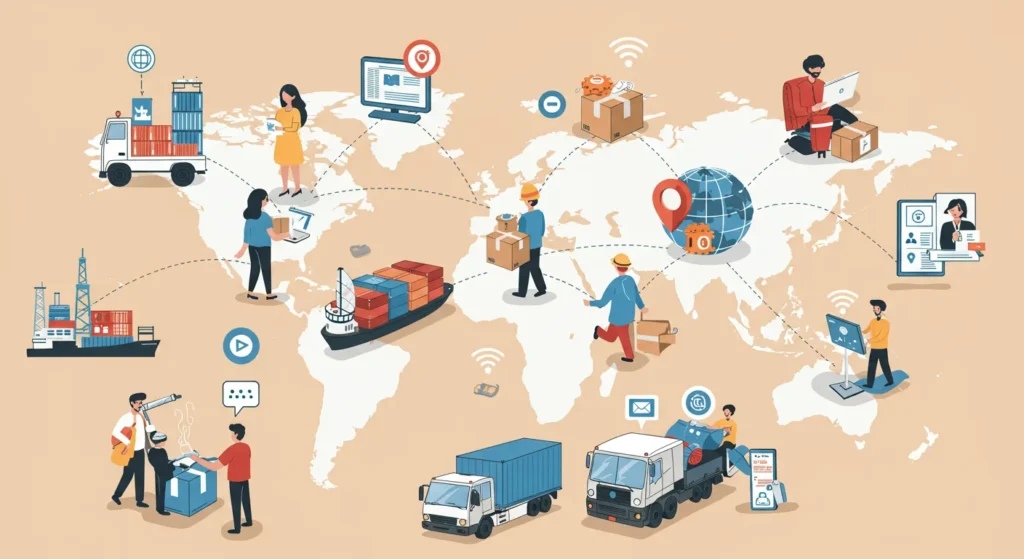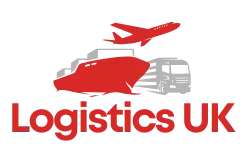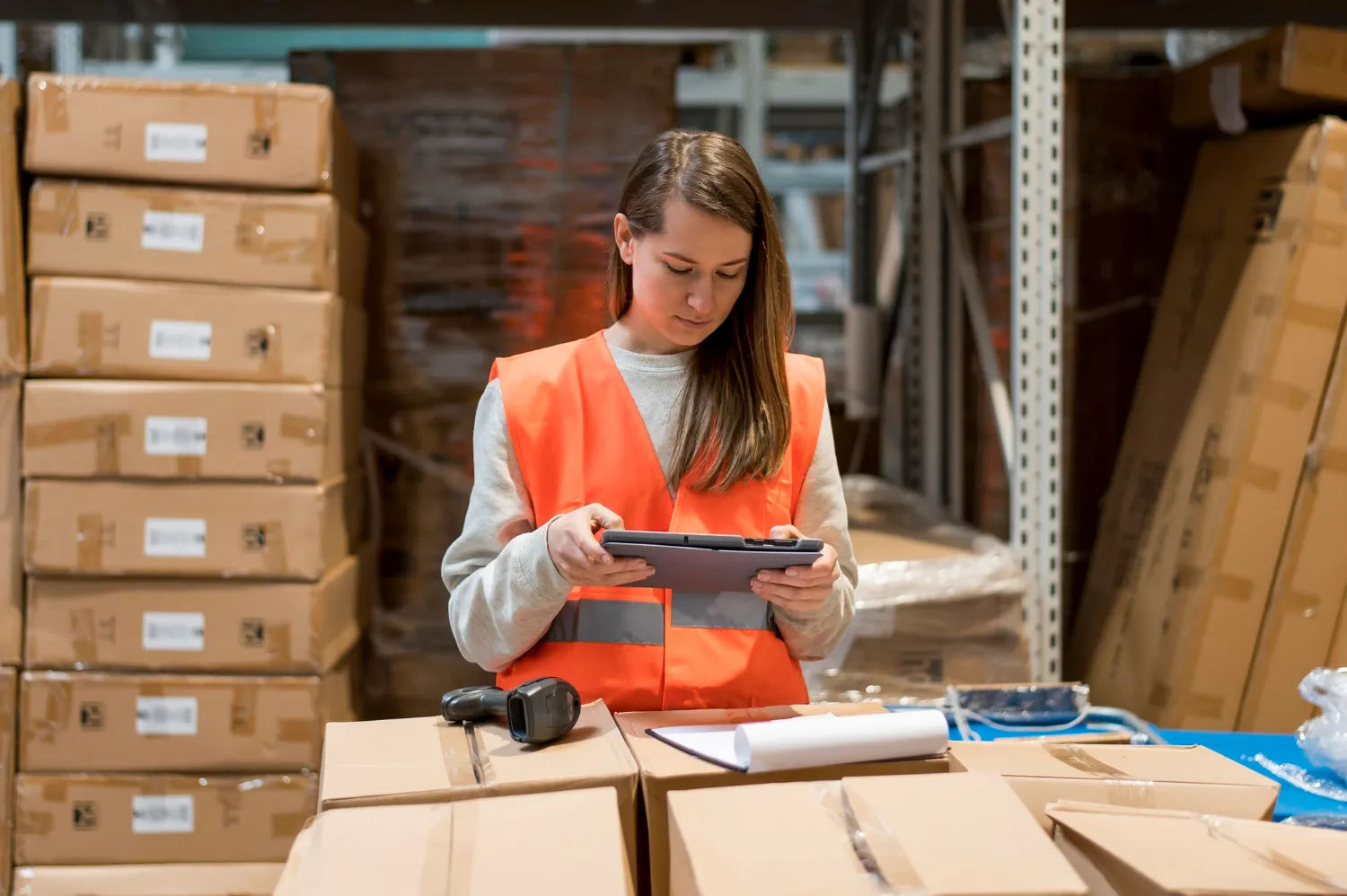Table of Contents
When planning international shipments in today’s interconnected economy, smart logistics technology has become essential for maintaining competitive advantage. Current data from January 2025 shows that businesses using advanced logistics analytics achieve 32% faster customs clearance, 28% lower shipping costs, and 45% fewer supply chain disruptions compared to companies relying on traditional methods.
The transformation from paper-based processes to digital logistics platforms represents one of the most significant changes in international trade over the past decade.
Understanding the complexities of modern global trade can seem daunting, but businesses that embrace data-driven logistics solutions gain significant operational advantages. Whether you’re coordinating shipments between manufacturing hubs in Shenzhen and distribution centers in Los Angeles, or managing complex multi-country supply chains, partnering with technology-forward freight forwarders like those at https://twingsupply.net/ helps you leverage real-time data, predictive analytics, and automated documentation to streamline international operations while reducing costs and risks.
Current Smart Logistics Market Conditions
January 2025 Technology Adoption Update
Global logistics technology spending reached $47.8 billion in 2024, with artificial intelligence and IoT tracking systems driving the largest growth segments. Current adoption rates show significant momentum:
| Technology Category | Adoption Rate 2025 | Average Implementation Cost | ROI Timeline |
| Real-time Tracking | 73% | $25,000-45,000 | 8-14 months |
| AI Route Optimization | 41% | $85,000-150,000 | 12-18 months |
| Automated Documentation | 58% | $35,000-75,000 | 6-12 months |
| Predictive Analytics | 34% | $65,000-125,000 | 15-24 months |
| Blockchain Integration | 19% | $95,000-200,000 | 18-36 months |
Port automation levels continue advancing, with Shanghai, Rotterdam, and Los Angeles leading in smart terminal deployment. These facilities now process containers 25% faster than traditional terminals, directly benefiting shippers through reduced dwell times and more predictable schedules.
Container shipping rates have stabilized with technology-enabled carriers offering 15-20% better on-time performance compared to traditional operators. This reliability premium translates to improved customer satisfaction and reduced inventory carrying costs for importers and exporters.
Why Choose Smart Logistics for Global Operations?
For businesses looking to optimize international trade operations, smart logistics technology offers measurable advantages that directly impact profitability. Consider these performance improvements:
Technology Impact on Key Metrics
| Operational Area | Traditional Method | Smart Logistics | Improvement |
| Customs Processing | 3-7 days | 1-3 days | 60% faster |
| Route Optimization | Manual planning | AI optimization | 18% cost reduction |
| Shipment Visibility | Periodic updates | Real-time tracking | 95% accuracy |
| Documentation | Paper/email | Digital automation | 75% time savings |
| Damage Prevention | Reactive response | Predictive monitoring | 40% reduction |
Here’s what you need to know: Smart logistics technology pays for itself through operational efficiencies, typically achieving full ROI within 12-18 months for mid-sized operations.
Competitive Advantage Considerations
Navigate market pressures by understanding that customers now expect real-time shipment visibility and proactive communication about delays or issues. Businesses using smart logistics report 35% higher customer satisfaction scores and 22% better customer retention rates.
Understanding Smart Logistics Technologies
Real-Time Tracking and IoT Sensors
When planning shipments of sensitive or high-value cargo, IoT sensor technology provides comprehensive monitoring throughout the journey. Current sensor capabilities include:
- Temperature monitoring: Accuracy within 0.3°C for pharmaceutical shipments
- Shock detection: Immediate alerts for impacts exceeding preset thresholds
- Humidity tracking: Prevents moisture damage to electronics and textiles
- GPS location: Updates every 15-30 minutes with 3-meter accuracy
- Container security: Door opening alerts and tamper detection
For a typical $75,000 electronics shipment from Guangzhou to Hamburg, comprehensive IoT monitoring costs $400-650 but prevents an average of $2,200 in damage or theft losses per container.
Artificial Intelligence Route Optimization
Understanding AI-powered logistics helps reduce costs while improving delivery performance. Modern systems analyze multiple variables simultaneously:
Key optimization factors include:
- Current traffic and weather conditions
- Port congestion and terminal capacity
- Carrier performance history and reliability
- Fuel costs and route efficiency
- Customs processing times by location
- Seasonal demand patterns and capacity constraints
Route Optimization Example: Shanghai to New York traditional routing: 21-25 days via Suez Canal AI-optimized routing considering current conditions: 19-22 days via Pacific gateway Savings: 2-3 days faster delivery, 8% lower total costs
Automated Documentation Systems
Navigate customs compliance by implementing automated documentation platforms. These systems reduce processing time by 60-75% while minimizing errors that cause delays.
Documentation Automation Comparison
| Process | Manual Method | Automated System | Time Savings |
| Commercial Invoice | 45-60 minutes | 8-12 minutes | 80% |
| Bill of Lading | 30-45 minutes | 5-8 minutes | 85% |
| Customs Declaration | 60-90 minutes | 10-15 minutes | 83% |
| Certificate of Origin | 20-30 minutes | 3-5 minutes | 85% |
Blockchain Supply Chain Transparency
For businesses requiring enhanced security and traceability, blockchain technology creates immutable records of every transaction and movement. Implementation costs range from $95,000-200,000 but provide significant value for high-risk or regulated products.
Benefits include:
- Tamper-proof documentation
- Complete supply chain visibility
- Automated compliance verification
- Reduced fraud and counterfeiting
- Simplified audit processes

Step-by-Step Smart Logistics Implementation
Phase 1: Technology Assessment and Planning (Weeks 1-4)
Navigate implementation by first evaluating your current logistics technology gaps. Assess the following areas:
- Current tracking and visibility capabilities
- Documentation processing efficiency
- Customs clearance performance metrics
- Customer communication systems
- Integration requirements with existing software
Calculate potential ROI by analyzing historical data on delays, damages, and processing costs. Most businesses find 15-25% of current logistics costs can be eliminated through smart technology adoption.
Phase 2: Vendor Selection and Pilot Program (Weeks 5-8)
Evaluate technology vendors based on their integration capabilities and industry experience. Ensure they provide:
- APIs that connect with your existing ERP or logistics software
- Training programs for your operations team
- Support for your specific trade lanes and product types
- Scalable solutions that grow with your business
- Compliance with international data security standards
Phase 3: Pilot Implementation and Testing (Weeks 9-16)
Start with high-value or high-risk shipments to test new systems. Select routes that represent your typical shipping patterns, such as:
- China to North America for electronics or manufactured goods
- Europe to Asia for machinery or automotive parts
- Intra-regional shipments for time-sensitive products
Monitor performance metrics during the pilot phase including tracking accuracy, documentation processing time, and customer feedback.
Phase 4: Full Deployment and Optimization (Weeks 17-26)
Expand smart logistics capabilities across all operations based on pilot results. Establish performance benchmarks and continuous improvement processes to maximize technology ROI.
Cost Analysis and ROI Calculations
Technology Investment Framework
Understanding the financial impact of smart logistics helps justify technology investments and set realistic expectations.
Investment Analysis for Mid-Size Operations (500+ shipments annually)
| Technology Component | Initial Investment | Annual Operating Cost | Expected Savings |
| IoT Tracking System | $35,000 | $18,000 | $65,000 |
| AI Route Optimization | $95,000 | $25,000 | $125,000 |
| Documentation Automation | $45,000 | $15,000 | $85,000 |
| Integration Platform | $25,000 | $12,000 | $45,000 |
| Total Investment | $200,000 | $70,000 | $320,000 |
For this example, the business achieves 60% ROI in year one and 310% cumulative ROI over three years.
Calculating Technology ROI for Your Business
Consider these variables when evaluating smart logistics investments:
- Average shipment value and frequency
- Current logistics costs as percentage of revenue
- Historical losses from delays, damages, or compliance issues
- Customer service costs related to shipment inquiries
- Staff time spent on manual logistics processes
Managing Smart Logistics Implementation Challenges
Data Integration and System Compatibility
Mitigate integration challenges by selecting platforms designed for logistics environments. Most modern systems offer pre-built connectors for popular ERP systems including SAP, Oracle, and Microsoft Dynamics.
Key considerations include:
- Data format standardization across systems
- Real-time synchronization capabilities
- Backup and disaster recovery procedures
- Cybersecurity measures for sensitive shipping data
- Compliance with international data privacy regulations
Staff Training and Change Management
Understanding resistance to new technology helps ensure successful adoption. Provide comprehensive training programs that cover:
- System navigation and daily operations
- Troubleshooting common issues
- Customer communication protocols
- Performance metrics and reporting
- Escalation procedures for technical problems
Budget 40-60 hours of training per logistics staff member for comprehensive smart logistics platform adoption.
Technology Vendor Management
Navigate vendor relationships by establishing clear service level agreements and performance metrics. Ensure contracts include:
- Uptime guarantees of 99.5% or higher
- Response time commitments for technical support
- Data backup and recovery procedures
- Regular software updates and feature enhancements
- Transparent pricing for additional users or features
Regional Smart Logistics Capabilities
Asia-Pacific Technology Infrastructure
When planning shipments through Asian trade routes, consider the advanced technology infrastructure available at major hubs:
Port Technology Rankings (January 2025)
| Port | Automation Level | Digital Processing | IoT Integration |
| Shanghai, China | 95% | Fully automated | Complete |
| Singapore | 92% | Fully automated | Complete |
| Busan, South Korea | 88% | Partially automated | Advanced |
| Hong Kong | 85% | Partially automated | Advanced |
European Union Digital Trade Initiatives
Understanding EU digital customs initiatives helps optimize European trade operations. The Union Customs Code now requires electronic submission for most trade documents, creating opportunities for businesses with automated systems to achieve faster processing.
North American Smart Border Programs
Navigate US and Canadian border crossings using trusted trader programs that integrate with smart logistics platforms. Businesses with C-TPAT or PIP certification combined with automated documentation achieve 50% faster customs clearance.
Also Read: How AI Is Reshaping Logistics and Reputation in Business
Technology Solutions for Specific Industries
Electronics and High-Tech Products
For businesses shipping electronics internationally, smart logistics technology addresses specific challenges:
- Temperature and humidity monitoring prevents component damage
- Real-time tracking reduces theft and loss
- Automated compliance documentation handles complex regulations
- Predictive analytics optimize shipping routes for time-sensitive deliveries
Pharmaceutical and Life Sciences
Understanding cold chain requirements helps ensure regulatory compliance and product integrity:
- Continuous temperature monitoring with immediate alerts
- Blockchain documentation for FDA and EMA compliance
- Automated exception reporting for regulatory submissions
- Integration with quality management systems
Automotive and Industrial Equipment
Navigate complex automotive supply chains using technology designed for just-in-time manufacturing:
- Predictive analytics prevent production line disruptions
- Real-time visibility supports lean inventory management
- Automated documentation handles complex duty classifications
- Integration with manufacturer planning systems
Measuring Smart Logistics Performance
Key Performance Indicators
Evaluate smart logistics success using metrics that directly impact business performance:
| Metric Category | Traditional Performance | Smart Logistics Target | Measurement Method |
| On-time Delivery | 75-85% | 92-97% | Delivery confirmation data |
| Customs Clearance | 3-7 days | 1-3 days | Port processing reports |
| Documentation Accuracy | 80-90% | 96-99% | Error rate tracking |
| Shipment Visibility | 40-60% | 95-98% | Real-time tracking coverage |
| Customer Satisfaction | 70-80% | 88-94% | Survey and feedback data |
Continuous Improvement Processes
Optimize smart logistics performance through regular analysis and system updates:
- Monthly performance reviews with technology vendors
- Quarterly assessment of ROI and cost savings
- Annual technology roadmap planning
- Ongoing staff training and system optimization
Frequently Asked Questions
How long does smart logistics implementation typically take?
Most businesses complete basic implementation within 4-6 months. This includes system selection, integration, testing, and staff training. Full optimization with advanced analytics typically requires 8-12 months.
What’s the minimum shipment volume that justifies smart logistics investment?
Generally, businesses shipping 200+ containers annually or $5 million in trade value benefit from comprehensive smart logistics platforms. Smaller operations can start with basic tracking and documentation automation.
How do I ensure data security with cloud-based logistics platforms?
Select vendors with SOC 2 Type II certification, end-to-end encryption, and compliance with international data privacy regulations. Ensure contracts include specific security requirements and regular auditing procedures.
Can smart logistics technology integrate with existing ERP systems?
Modern platforms offer APIs and pre-built connectors for popular ERP systems. Integration typically requires 2-4 weeks for basic connectivity and 6-8 weeks for full data synchronization.
What happens if technology systems fail during critical shipments?
Establish backup procedures and redundant systems with your technology vendor. Most platforms offer 99.5%+ uptime guarantees with manual override capabilities for critical operations.
Next Steps for Implementation
To establish successful smart logistics operations:
- Conduct a technology audit of your current logistics systems and identify optimization opportunities
- Calculate potential ROI based on your shipment volumes, values, and current operational costs
- Request demonstrations from three smart logistics platform providers
- Start with a pilot program covering 25% of your shipments to test systems and processes
- Establish performance metrics and monitor ROI throughout the implementation process
Consider partnering with freight forwarders who already have smart logistics infrastructure in place. This approach reduces implementation complexity while providing immediate access to advanced tracking, documentation, and analytics capabilities.
Navigate the future of international trade with confidence by treating smart logistics as a strategic investment rather than just operational technology. The businesses that embrace data-driven logistics today will maintain competitive advantages as global trade continues to evolve and digitize.


